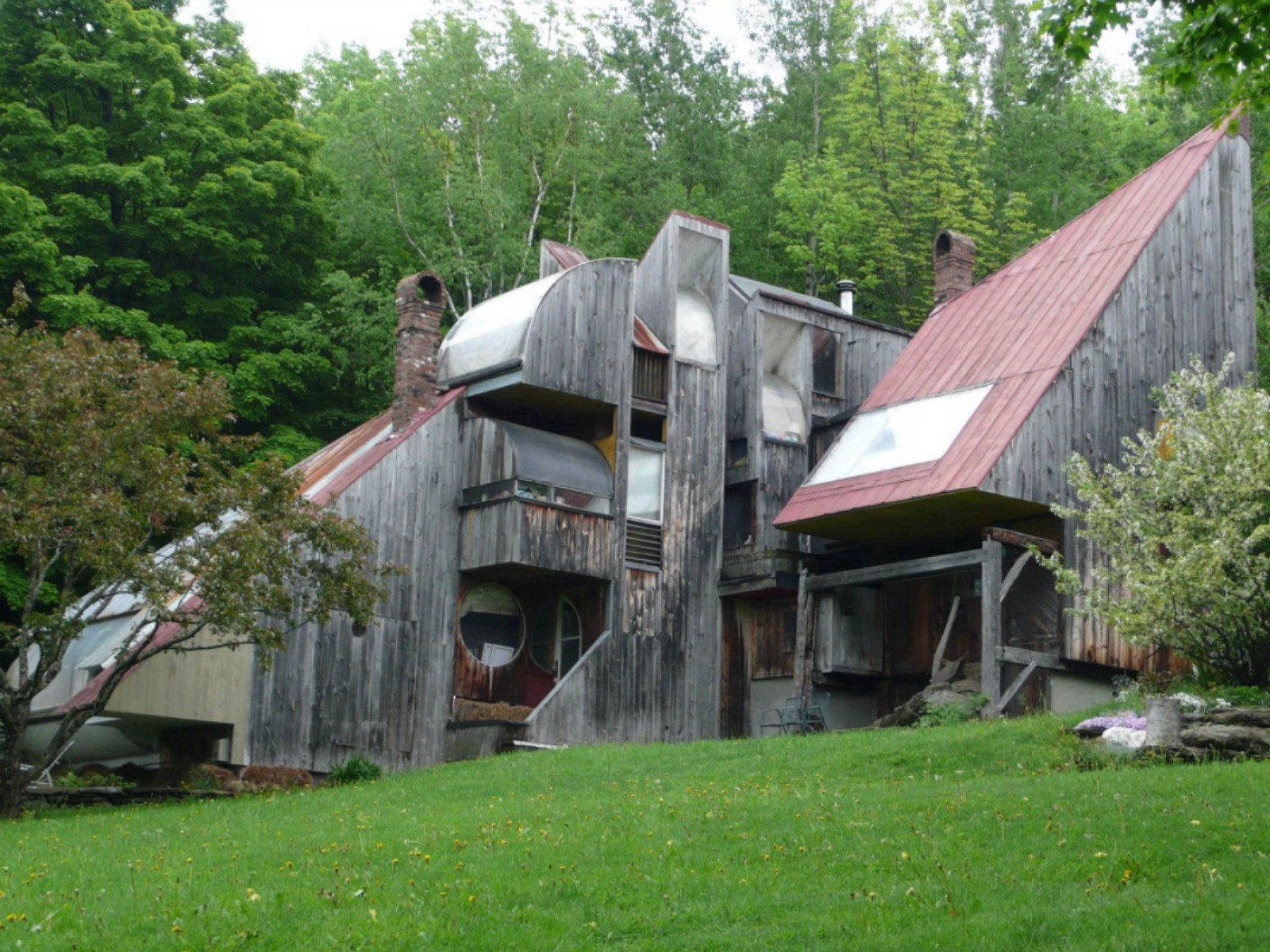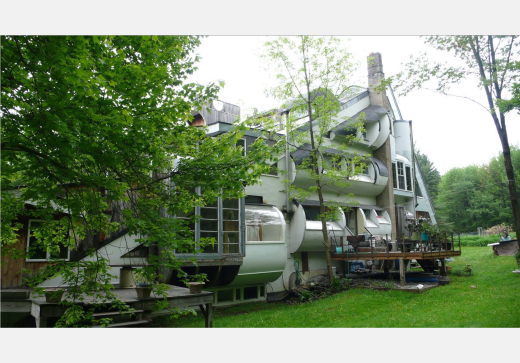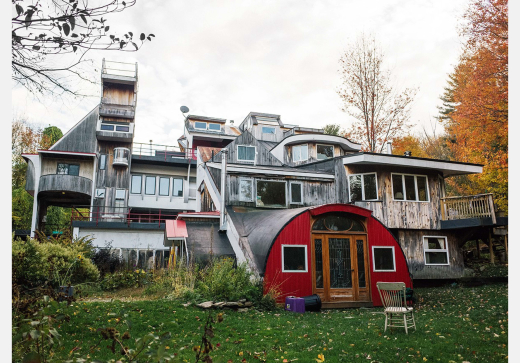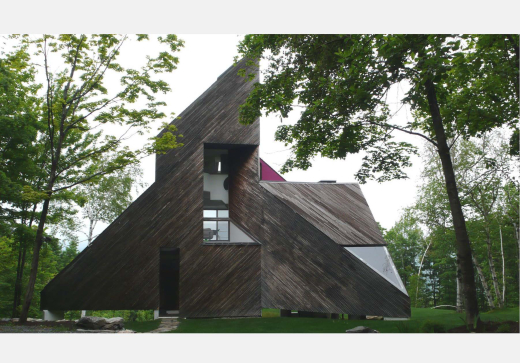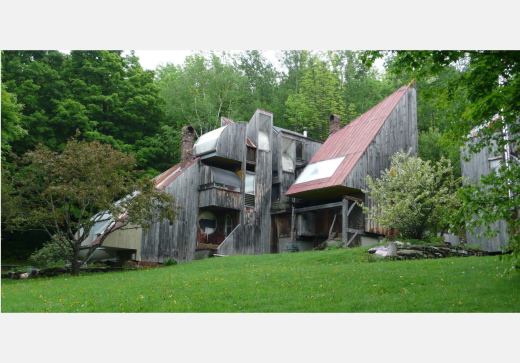In the late 1950s and early 1960s there was an efflorescence of ski resorts across the USA. In Vermont the pastime was in its heyday with 81 ski areas operating in 1966. Not the least of which were the Sugarbush, Glen Ellen, and Mad River Glen resorts in the Mad River Valley. Nestled between the two ranges of the Green Mountains, it was a groovy place to ski and be seen. Young professionals and hip suburbanites were drawn to the area for its low-key charms and great skiing. It was this atmosphere that drew a group of adventurous young graduates of the Yale School of Architecture to the area to try their hand at design, building and developing weekend houses for the ski set.
The method that these young designers and builders utilized was new for the time. The idea was that the architect would also physically build their designs. This meant that construction could proceed before the drawings were complete. The outcome was an architecture that was experimental, improvisational, and perfect for the mood of the times.
Two early pioneers of this design/build movement, as it has come to be known, were David Sellers and William Reineke. As students they were exposed to the ideas of a young sculpture professor named Robert Engman, who had been taught by Josef Albers after Albers, fleeing Nazi persecution, left the Bauhaus in order to emigrate to the United States. The art process technique that Sellers and Reineke translated into an architectural method began with working with materials directly. The idea was to build something, and then respond to what you had made in order to find the next step in the process. Reineke and Sellars were also joined by Ed Owre, a sculpture graduate from Yale who was excited to be building houses in a way that reminded him of building sculptures.
The projects began to get recognized by both the architectural and popular press. Life magazine ran a spread on what they called a “Treehouse/Skihouse”. This inspired other young architects to come to the area and try their hand at building experimental houses. Ultimately a community grew up in East Warren, Vermont and it has since been known as Prickly Mountain.
The Design/Build Movement in Vermont
Author
Danny Sagan
Affiliation
Associate Professor, School of Architecture + Art, Norwich University / Principal, DS Architects
Tags
Today you can still find examples hidden in the hillsides above East Warren. One stand-out example is called The Dimetrodon. [Figure 1] It was built by students from Penn who ultimately went on to become leaders in the field of energy efficiency and green design. If you are polite, you can see this inspired collage of an early co-housing condominum from the driveway right off Dimetro Road. [Figure 2] Nearby, also viewable from the road is an accretion of volumes that grew out of the original Tack House, which was one of the first Prickly Mountain experiments. [Figure 3] Further up the hill take a left onto Loop Road. If the leaves are down for the season you will be able to see some exciting architectural forms appearing out of the woods. The best of the bunch is the Sibley/Pyramid house, about halfway up Loop Road on the left. [Figure 4]
Notes
When visiting this part of the world, make sure to go to the campus of the Yestermorrow Design/Build School. An outgrowth of the Design/Build movement, the school has hosted classes taught by many of the architect residents of Prickly Mountain. Also be sure to stop in to see the Madsonian Museum of Industrial Design. Founded and run by David Sellers, this quirky institution is the Smithsonian of the Mad River Valley and honors the world’s best in industrial design. There are two experimental concrete houses designed by David Sellers, the Bunker House and the Home Run House, both of which can be rented for short-term stays.
The Design/Build movement has had a lasting effect on the architecture of Vermont. There are architects running successful firms that began their careers on Prickly Mountain. There are young design/builders who met their business partners at Yestermorrow. The movement continues to inspire, even though some of the first Design/Build projects came into being more than fifty years ago.
For a detailed history of the Design/Build Movement, please see Architectural Improvisation: A History of Vermont’s Design/Build Movement, 1964-1977.
Green Mountain Modern is part of the Docomomo US Regional Spotlight on Modernism Series, which was launched to help you explore modern places throughout the country without leaving your home. Previous spotlights include Chicago, Mississippi, Midland, MI, Houston, Las Vegas, Colorado, Kansas, Pittsburgh, Milwaukee, and South Dakota. Have a region you'd like to see highlighted? Submit an article.
If you are enjoying this series, consider supporting Docomomo US as a member or make a donation so we can continue to bring you quality content and programming focused on modernism.
